Suitland Bog Trip
September 1st, 2007While some folks may be preparing for Labor Day BBQ’s, eight members of GWAPA went on a ranger-guided tour of the Suitland bog in Suitland, MD. The ranger explained how it is an active job maintaining the bog to preserve many of the native species from being crowded out. Honeysuckle is a huge invasive problem for them, over-coming many of the native forest plants such as the Lady Slipper orchid or Spotted Wintergreen, a variegated creeping plant.
In the bog itself, magnolia trees are slowly starting to shade out some of the other native plants. The rangers work with volunteers to prevent too many magnolia and poison sumac trees from stealing light from the plants below. Even so, human development surrounding the bog is an ever-increasing issue that could impact the bog in the future, despite initial environmental studies that find little threat.
With water sources for the bog being several hundred feet away, it’s not hard to see how someone putting down lime on their lawn, could eventually alter the pH of the bog water itself. If that happened, it would be a terrible shame, as the plants here are truly gorgeous.
The Northern Pitcher-Plants (Sarracenia purpurea) vary quite significantly from plant-to-plant, in terms of their purple veining, but as you can see, they’re all quite nice. The green and orange stalks rising above the plants are its’ flowers.
The pitchers themselves were mostly filled with water due to recent rains. As you can see above, this particular pitcher has successfully lured in its prey. There are many different species of plants growing in amongst the pitcher plants. Various reeds, including Ten-Angled Pipewort (Eriocaulon decangulare), which is another rare Maryland native.
The seed nodules on this Eriocaulon’s flower are quite small, as you can see below. Since it flowers from July thru August, there were flower stalks to be found everywhere throughout the bog.
Another reed found in the bog is the Twisted Spikerush (Eleocharis tortilis), seen below. I suspect that this plant probably would grow in our aquariums, but would be much taller than the dwarf hairgrass we’re used to growing from the same genus. In any case, being a protected plant in Maryland, I suspect we’ll never get the change to try.
The pitcher plants were not the only carnivorous plant in this particular bog. There was also the Spatulate-leaved Sundew (Drosera intermedia) shown below which is a small sundew plant that lures and traps small insects with sticky dew found on each hairy leaf. Unfortunately, the water source feeding the part of the bog that these are found is slowly declining, so the future of this particular plant here is uncertain. Another type of sundew, the Thread-leaved Sundew (Drosera filiformis) was reportedly here as well, but there have been no recent sightings of this species.
There are many other rare species of plants at the Suitland Bog. This Red Milkweed (Asclepias rubra) below is considered a very rare plant in Maryland. Nevertheless, it is a very beautiful plant that I hope endures. (Note: A commenter has mentioned that this picture below is not Asclepias rubra. This plant is listed on the brochure for the bog, and was pointed out to us by our ranger. Perhaps I have the photo mixed up.)
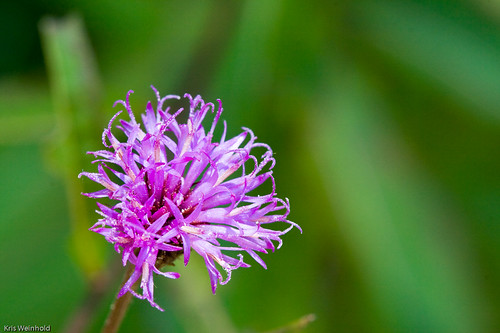
Finally, the ranger mentioned a number of other bogs throughout Maryland. He mentioned another one in College Park that is on Pepco land, and has recently been mowed right over, probably non-intensionally by a maintenance worker. In this regard, it’s important for more citizens to know what precious things are growing right in their backyards, and to realize the impact they can have in protecting them by treating their own land with proper care. Most state’s natural resource departments are under-funded, but that doesn’t mean that they don’t have tremendous sites to visit and appreciate. Additionally, they are always looking for volunteers to help pull out invasive species, and perform general maintenance on their sites. I hope you’ve enjoyed my account of our Suitland Bog tour.
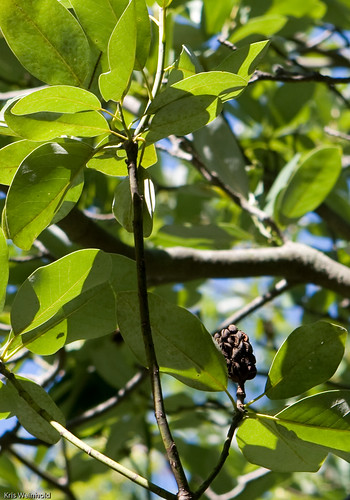
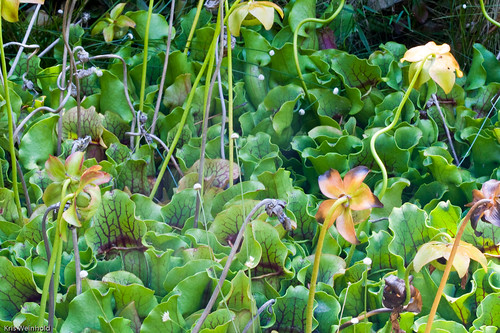
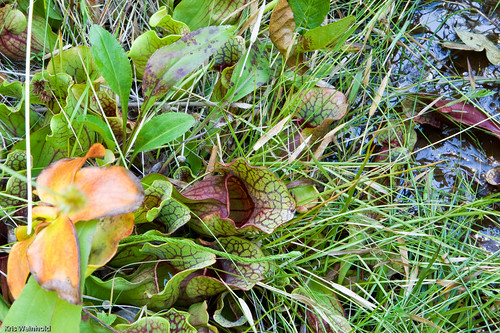
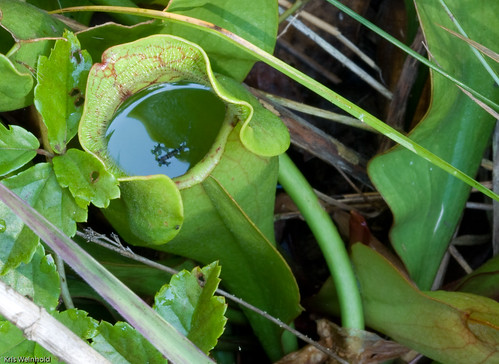
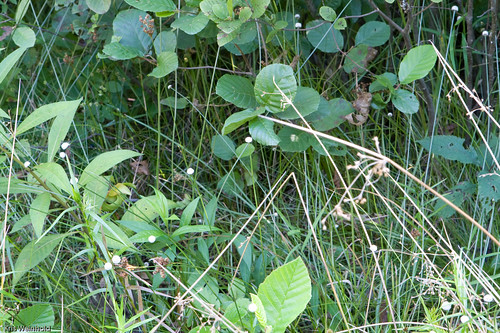
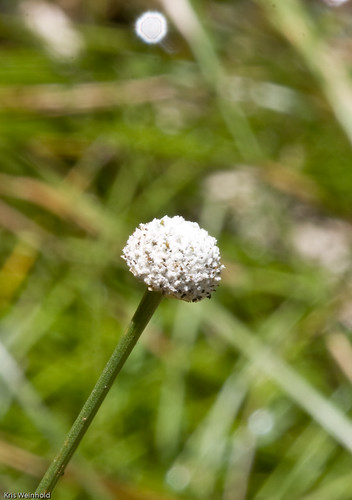
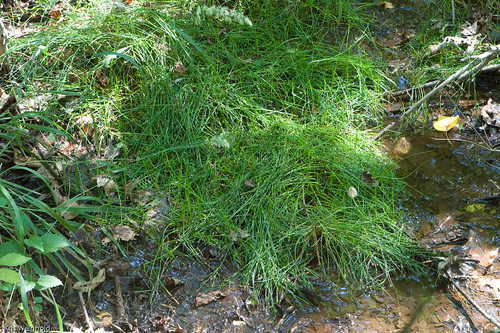
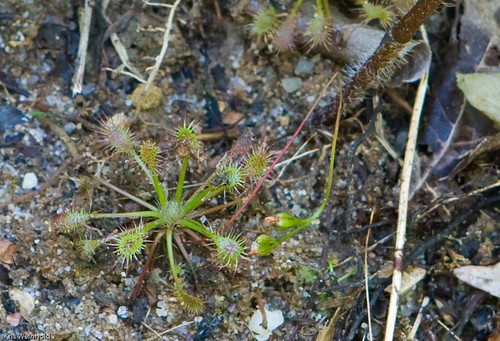
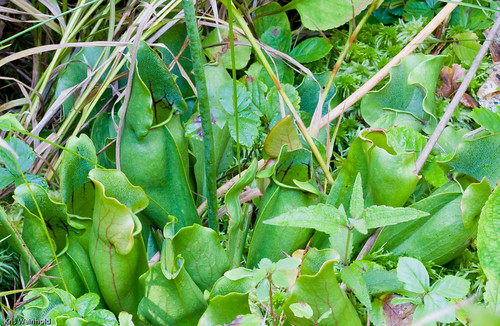
September 3rd, 2007 at 8:45 am
Interesting blog of bog! The Asclepias ruba is not Asclepias. You are correct A. ruba is very rare. Here is a link to a real photo of it or u can do a Google image search and see this. http://images.google.com/imgres?imgurl=http://www.nativeventures.net/pics/asclepias_rubra.jpg&imgrefurl=http://www.nativeventures.net/photos.html&h=384&w=512&sz=176&hl=en&start=1&um=1&tbnid=wyfGngFj9lDxiM:&tbnh=113&tbnw=150&prev=/images%3Fq%3Dasclepias%2Brubra%26svnum%3D10%26um%3D1%26hl%3Den%26rlz%3D1T4GGLR_enUS221US222%26sa%3DX
Gary
September 3rd, 2007 at 8:59 am
Thanks for your correction Gary. It seems that either the ranger incorrectly identified it to us, our I just got it mixed up in my notes. I’ll be sure to look for the real one next time I’m there. It’s listed in the brochure that the ranger gave us, so I’m presuming it is indeed found at the Suitland Bog.
September 3rd, 2007 at 10:42 am
Nice writeup Kris. The ranger pointed out a different plant as Asclepias ruba if I recall. I don’t this it was in bloom at the time of our trip on Saturday.
September 3rd, 2007 at 12:39 pm
Ah, that’s what I get for lagging behind to take pictures.
September 4th, 2007 at 11:06 am
Kris, your photos are amazing. I especially like the pitcher plant photos. It would be great to see this bog again 🙂
July 5th, 2008 at 1:16 pm
Hi, this is the ranger that took you on the bog trip. Do you have more pics of the plant was labeled as Asclepias rubra? It looks a lot like Liatris but I need a couple of other parts to make sure. Also, do remember what part of the bog the picture was taken? Nice pics by the way.
July 5th, 2008 at 1:37 pm
Ahh, I think it is New York Iron Weed (Vernonia noveboracensis).
February 7th, 2009 at 10:40 am
Hi Chris
I would like to take my high school class of Field Natural History students to this bog in the spring. We would probably come on a saturday morning, a tuesday afternoon, or a sunday afternoon. Could you guide us? Or is the bog open for visitors? I remember visiting here by myself once and had to park outside a fence and walk in. It seemed like not a good place to park with a school minibus.
Also wondered if permission was needed; for these reason I have not been back with kids yet but this place is a real treasure.
February 7th, 2009 at 11:52 am
Fred, if Chris doesn’t see this, you can contact the Ranger’s office via the contact info on their website. They should be able to setup a tour with your class.
http://www.pgparks.com/places/nature/suitland.html
July 26th, 2009 at 10:17 am
Definitely not red milkweed. Beautiful photos!
March 6th, 2010 at 7:54 am
This is Asclepias rubra, please not it has a range of color.
http://www.flickr.com/photos/91753832@N00/3682200913/
March 6th, 2010 at 8:22 am
You’re correct, weedsforwildlife. I finally got a proper picture in a subsequent visit to the bog:
http://www.guitarfish.org/2009/08/02/suitland-bog